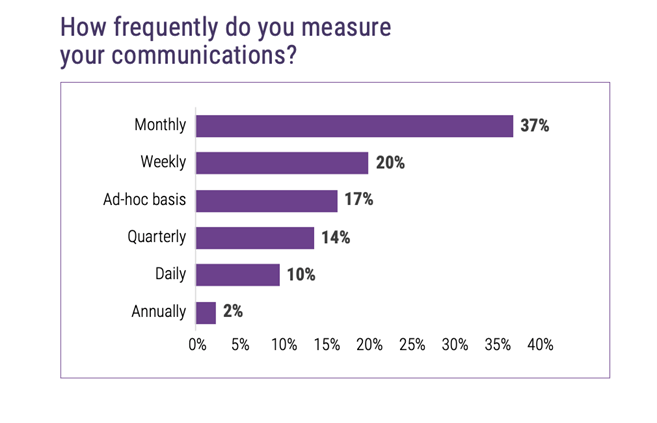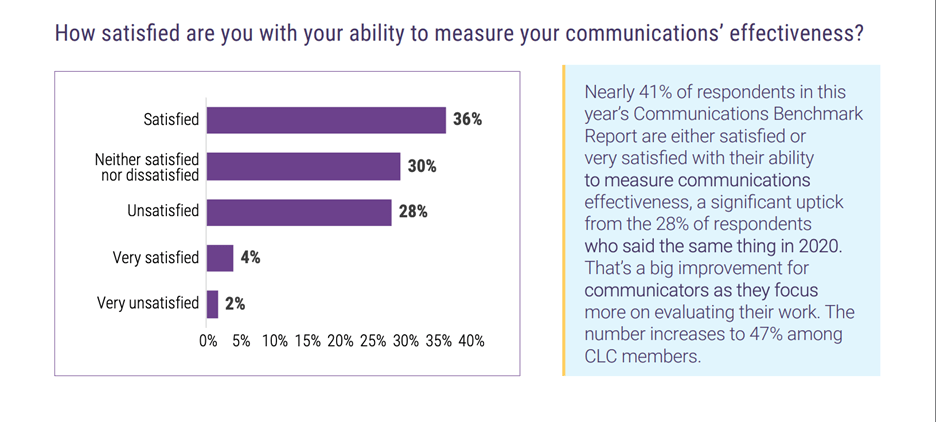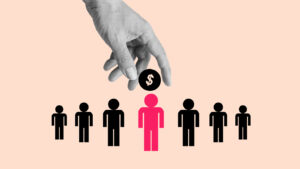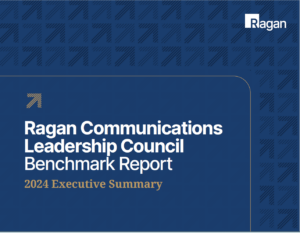Communicators are measuring their work more frequently, and using the data more strategically
Ragan’s exclusive Communications Leadership Council Benchmark Report is both a snapshot of the discipline and a roadmap for moving forward.

One of the big takeaways from Ragan’s 2021 Communications Benchmark Report: When it comes to assessing the effectiveness of their work, communicators are much more satisfied with their work than they were in 2020.
Fifty-two percent of respondents, for example, characterized their overall state of internal communications in 2021 as either above average or excellent, compared with only 41% last year. And just 15% described their work as poor or below average, compared to 21% in 2020.
There are a lot of reasons for this shift, according to the annual Benchmark Report. Communicators are much more likely to be involved in strategic decisions. They have better access to the CEO. Their work has moved to center stage. It’s all a consequence of the crises of the past 15 months—public health, political and social. The pandemic had a silver lining for communicators—if such a condition is even thinkable—their value to their organizations rose exponentially and their work in support of the shift to remote work, DE&I and more came into sharper focus and play.
These are among the key findings from the third annual Communications Benchmark Report, an exclusive research effort from Ragan’s Communications Leadership Council. The findings, culled from a comprehensive survey in January and February, yielded 755 qualified responses from internal and external communicators worldwide. It provides communicators with both a snapshot of their profession at a pivotal moment in history, and a blueprint for 2021 and beyond.
Several things emerged clearly. Communicators are measuring their work more frequently, for one. Last year, 30% of respondents described their measurement efforts as ad hoc. This year that number decreased to 17%, with a large increase in monthly measurement efforts, from 24% of respondents last year to 37% this year. And they’re also using that data more strategically and less in ad-hoc ways, focusing on benchmarking, identifying the best channels, and making better editorial decisions.

Overall, 78% of respondents measure their communications effectiveness. And communicators also are more satisfied with their measurement efforts. Indeed, nearly 41% of respondents are either satisfied or very satisfied with their ability to measure communications effectiveness, a significant uptick from the 28% of respondents who said the same thing in 2020. That’s a big improvement for communicators as they focus more on evaluating their work.

Communicators also are using their measurement findings in different and more strategic ways. This year, as with a year ago, they were focused on identifying the most effective channels, but in 2021, there is significantly more focus on making better editorial content decisions and on benchmarking best practices. There’s less of a perceived need to gain a seat at the table for strategic decisions, because that happened in significant ways in 2020.
Communication Leadership Council member responses diverged in several significant ways from the general population of respondents. In one example, Communication Leadership Council respondents were much more likely to view both internal and external communications as above average or excellent, with 80% judging their internal comms as above average or excellent, and 57% saying the same about their external communications efforts.
Download a copy of Ragan’s third annual Communications Benchmark Report executive summary here. To obtain a full copy of Ragan’s 2021 Communications Benchmark Report become a member of the Communications Leadership Council. Click here for more details.






